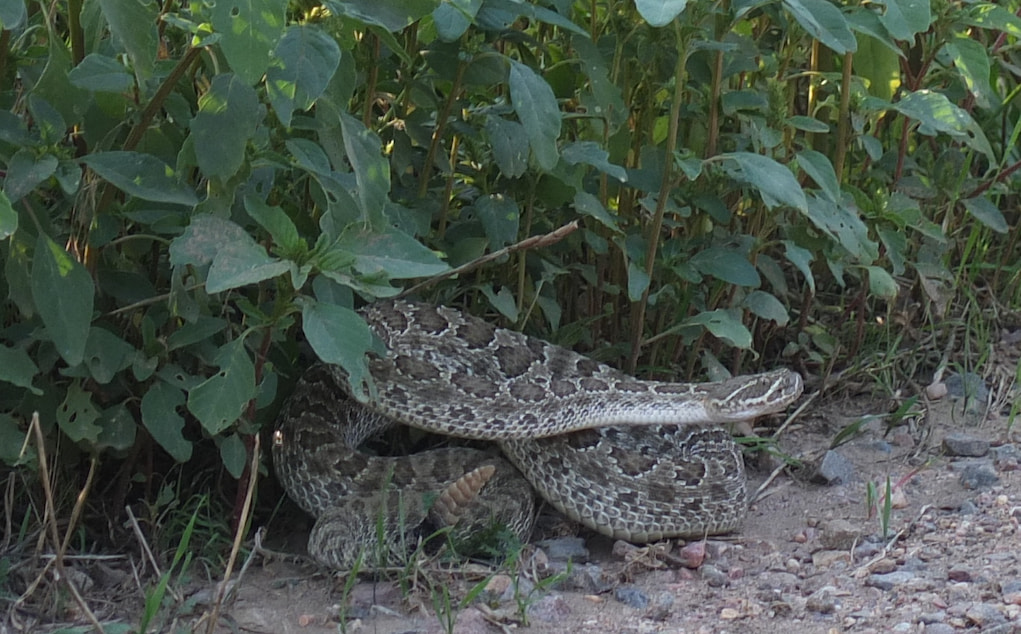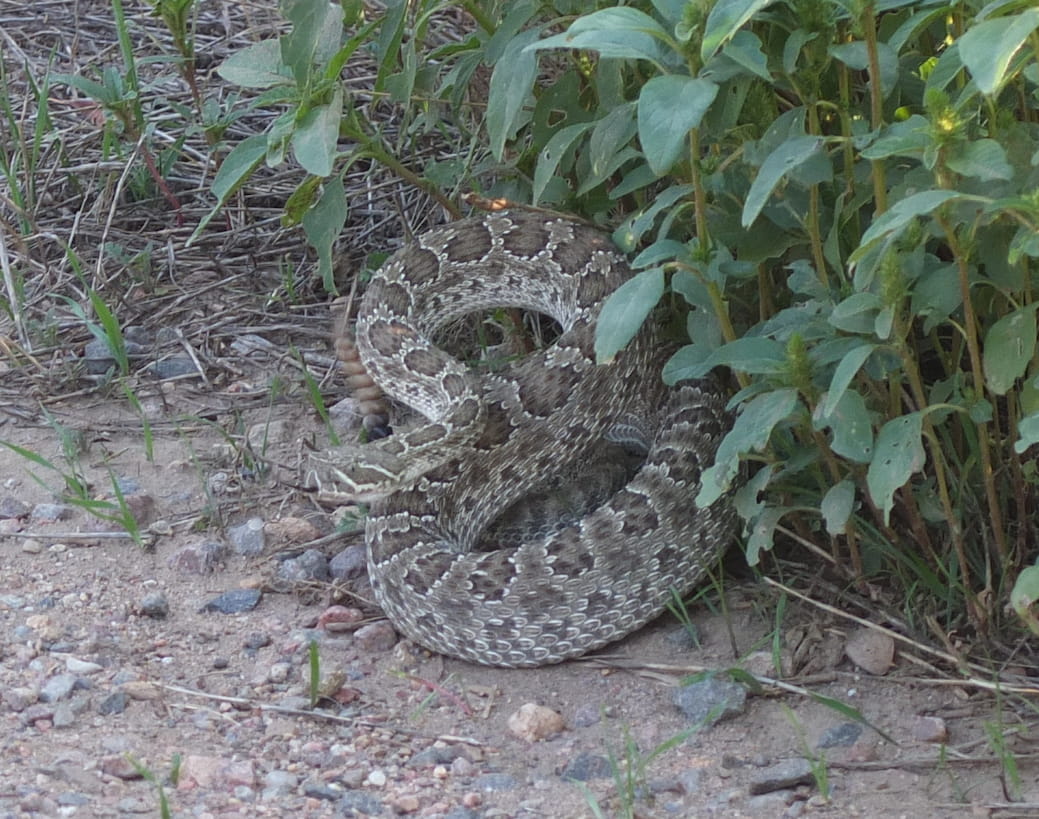Prairie rattlesnake

Rattlesnake in alert position.
The prairie rattlesnake (Crotalus viridis), also called the western rattlesnake or Great Plains rattlesnake, is a poisonous snake that inhabits North America, from southwestern Canada to northern Mexico. Its preferred habitat is grasslands and areas with little vegetation, although it can also live in forests. It can be found up to heights of over 2,500m. It reaches a size of more than 1 meter in length. It wags its tail to sound the bell and warn intruders of their danger, as its powerful venom can kill even large animals. It is a viviparous snake, parturitions take place in August and October. Up to 12 young can be born at each birth, in the most favorable years. At three years of age, they reach sexual maturity. They can live up to more than 20 years. Their diet is made up of a wide variety of small animals, such as ground squirrels, land birds, mice, rabbits, prairie dogs, amphibians and even other reptiles.

Snake shaking its rattle.
Tags: serpiente, colorado, rattlesnake, serpmontserratnatural.com @Copyright 2020
Privacy Config